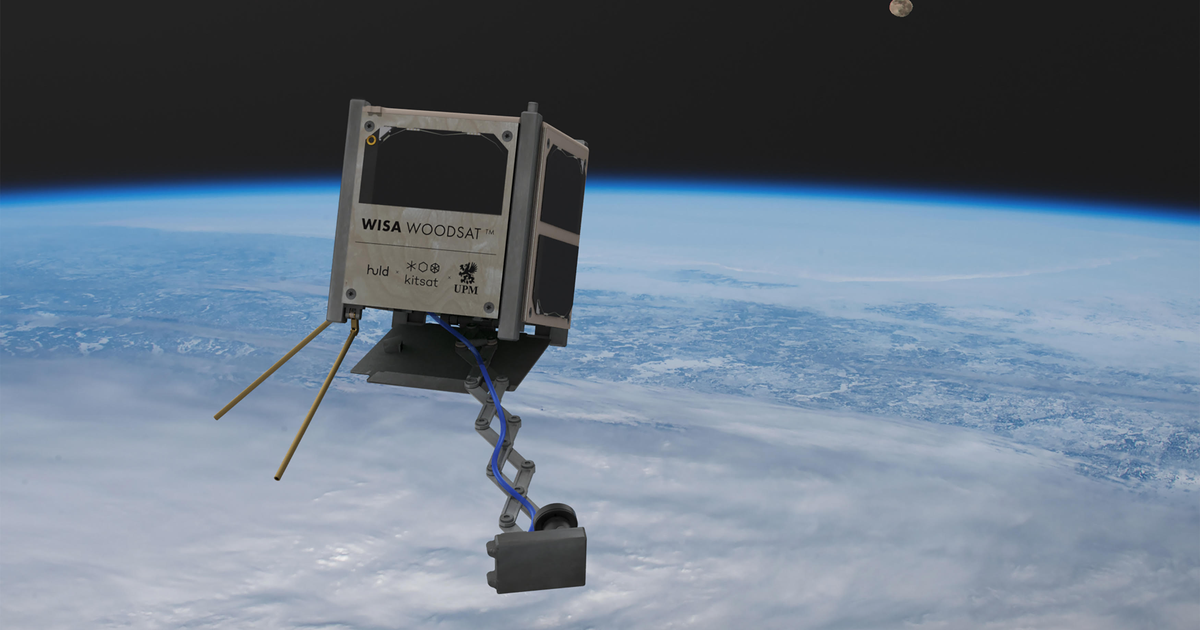
A satellite made of wood sounds like a concept ripped from the pages of Leonardo da Vinci’s sketchbooks. But Finnish company Arctic Astronautics wants to launch one into space by the end of 2021.
The WISA Woodsat, a microsatellite constructed out of plywood, was hoisted via weather balloon Saturday almost 20 miles above Earth. It was in the stratosphere to test the plywood construction in space-like conditions.
It was armed with a selfie stick to document its journey and a sensor package supplied by the European Space Agency.
A physically unimposing 4-inch cube, Woodsat’s “space plywood,” made by UPM Plywood, is dried out in a vacuum chamber and coated in a thin layer of aluminum oxide to keep it from degrading amid the highly reactive oxygen above the Earth’s atmosphere.
The little wooden satellites are built for simple radio communication, and are able to send messages and images around the world between ground relay stations. They’re more sustainable spinoffs of Arctic Astronautics’ Kitsats, which are meant to be used by hobbyists and students for educational purposes.
The Woodsat’s first flight lasted for nearly three hours before the balloon popped (on purpose) and the satellite careened back to Earth, where it was successfully recovered with no unexpected damage.
The satellite will be launched into orbit by private space company Rocket Labs’ Electron rocket.
On the sustainability front, making satellites out of plywood instead of aluminum or steel takes much less of a toll on the environment. Plus plywood is a lot cheaper.
For every ton of steel made, 1.9 tons of carbon dioxide are emitted. As much as 11.5 tons are emitted for each ton of aluminum.
Crewed satellites like the International Space Station won’t be made of wood anytime soon, thanks to the pressure exerted from the oxygen inside the station and the threat of tiny meteoroid punctures. But communication satellites don’t need to be quite as structurally strong.
This could be a model for cheaper, more sustainable satellites — as long as the orbital test goes well.
